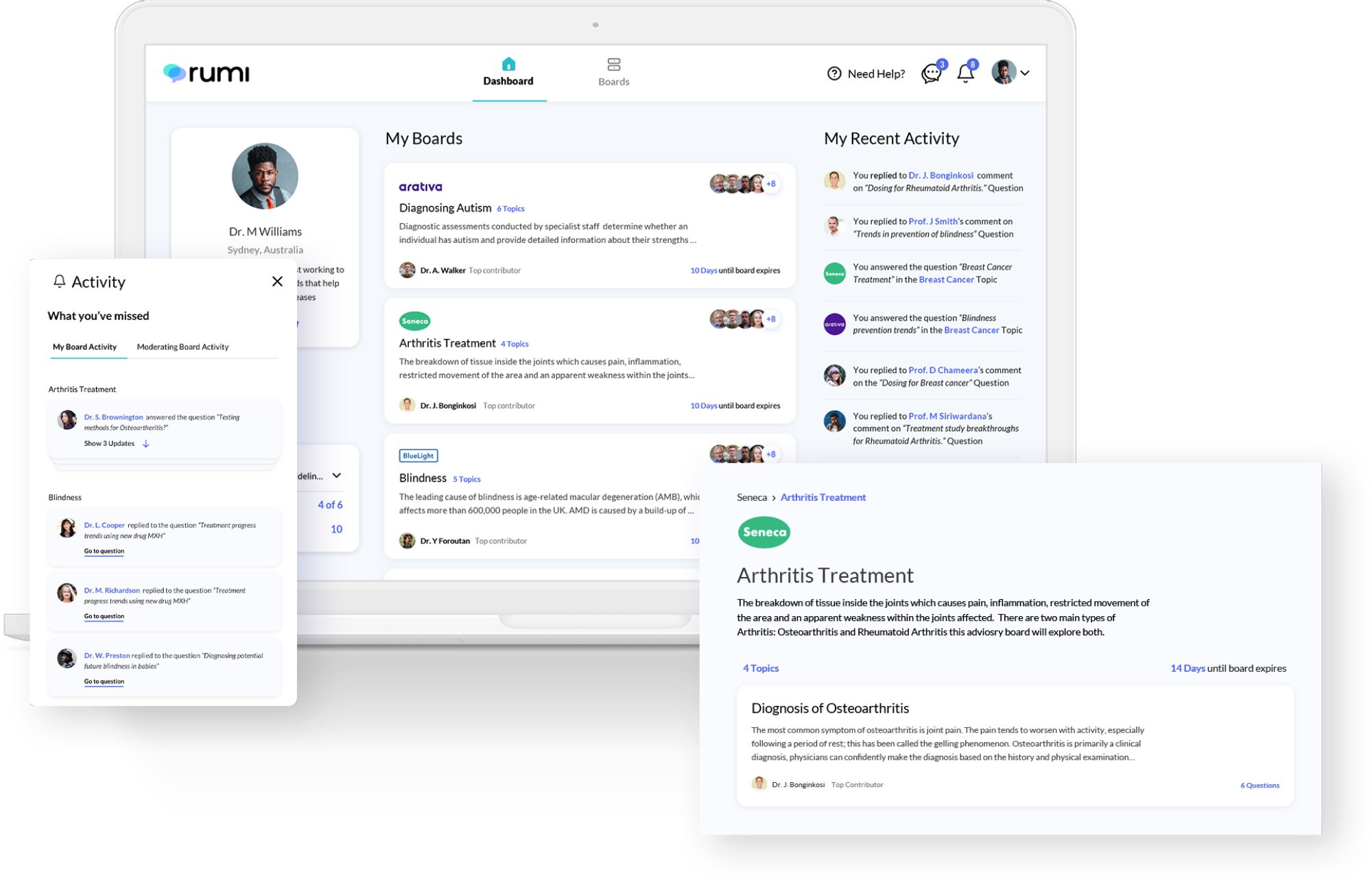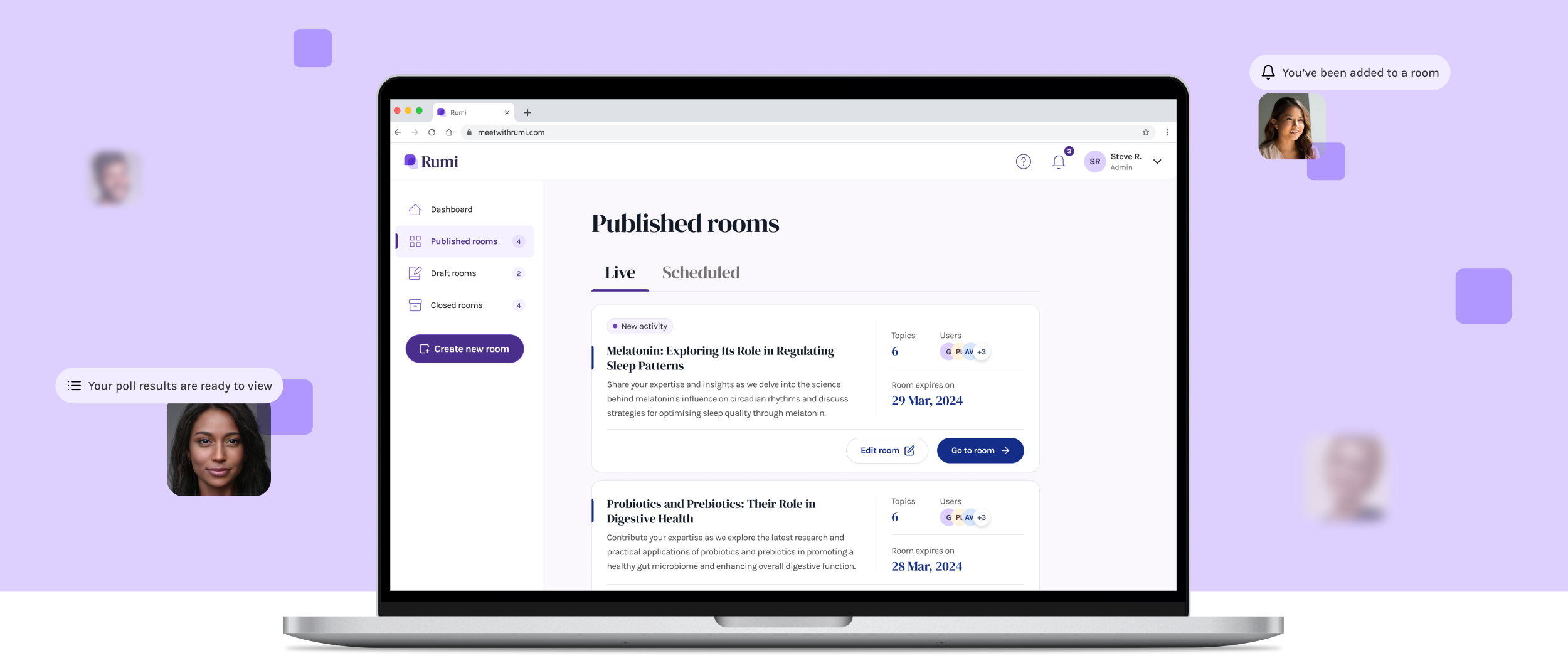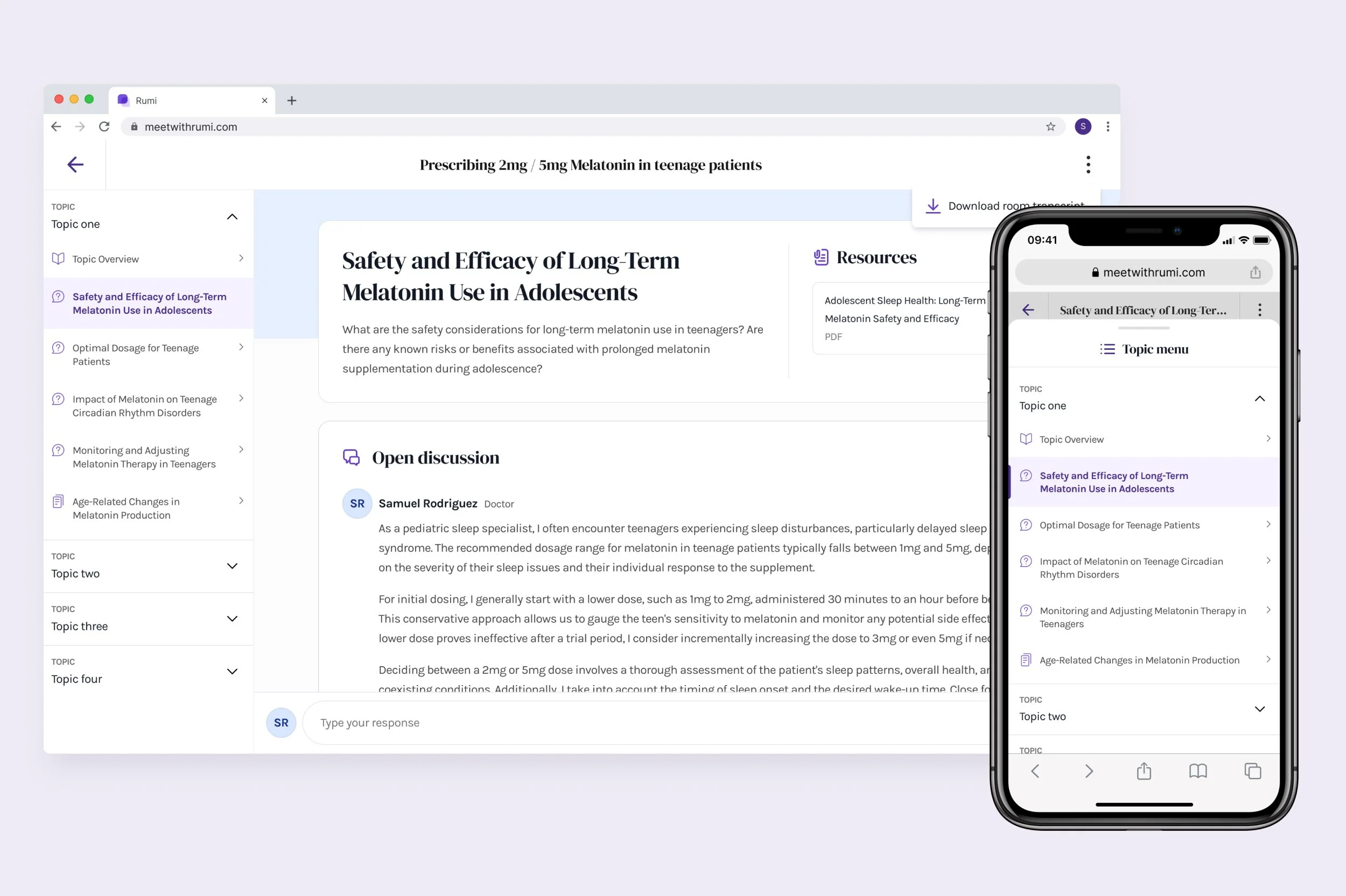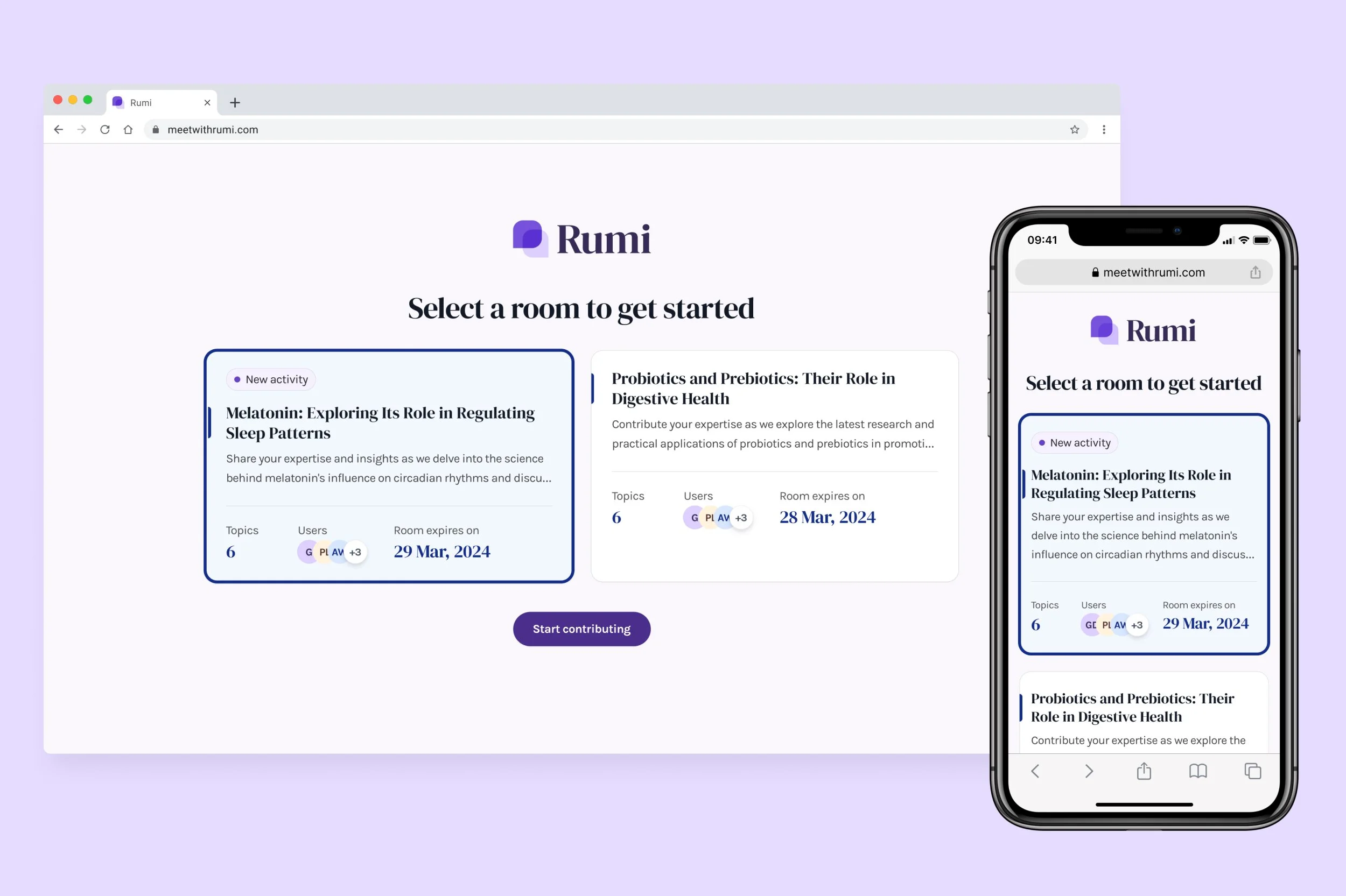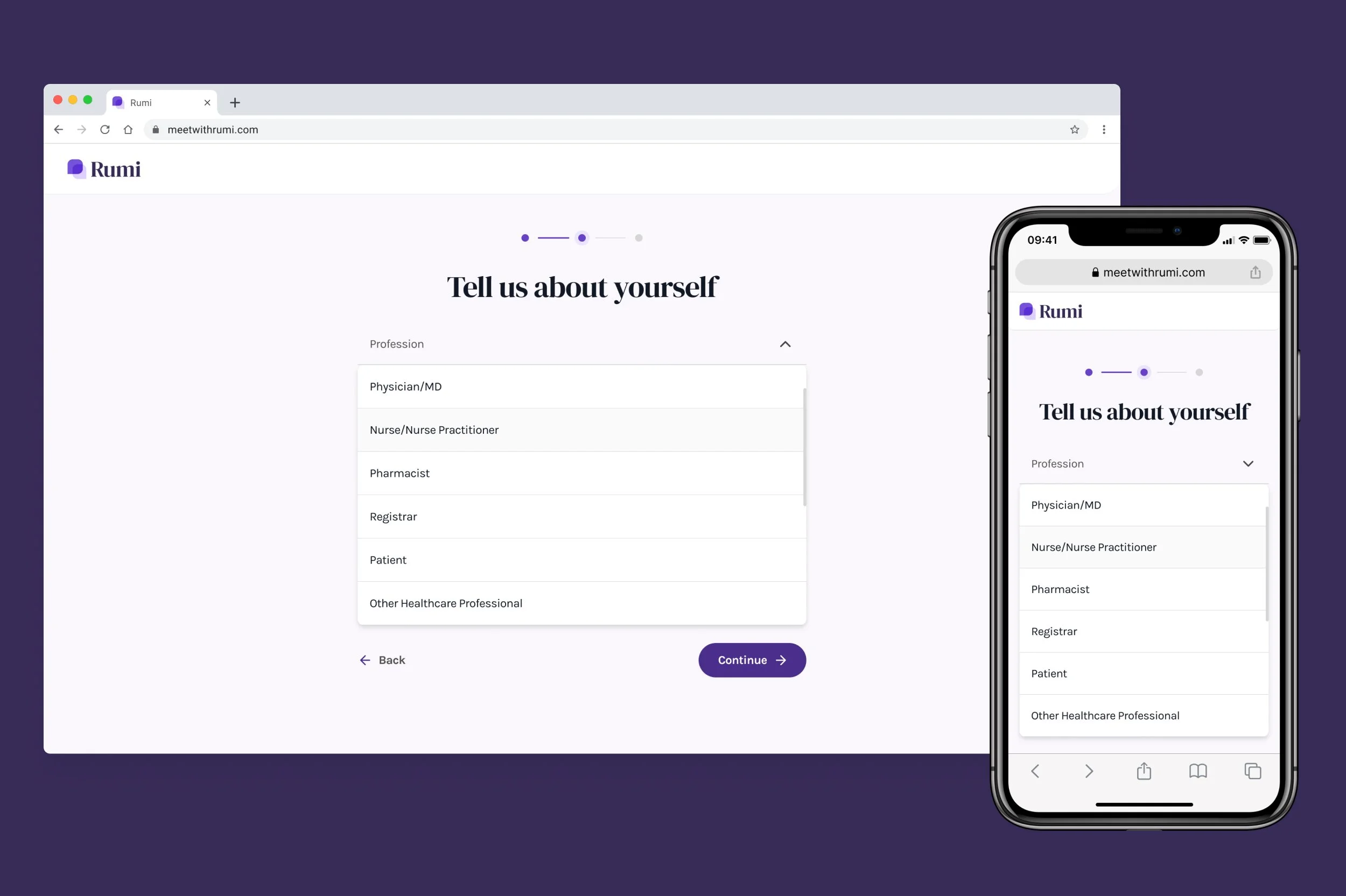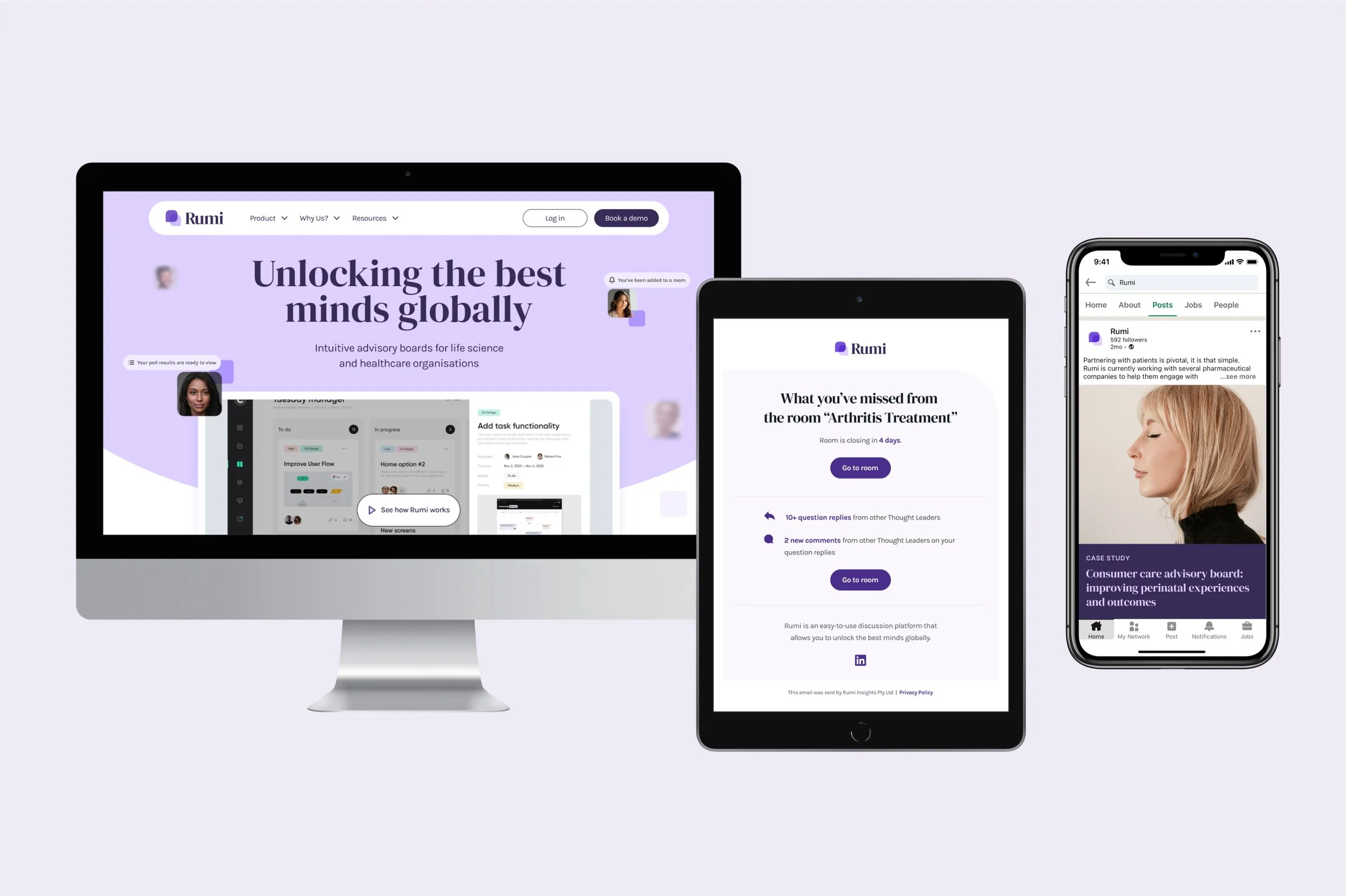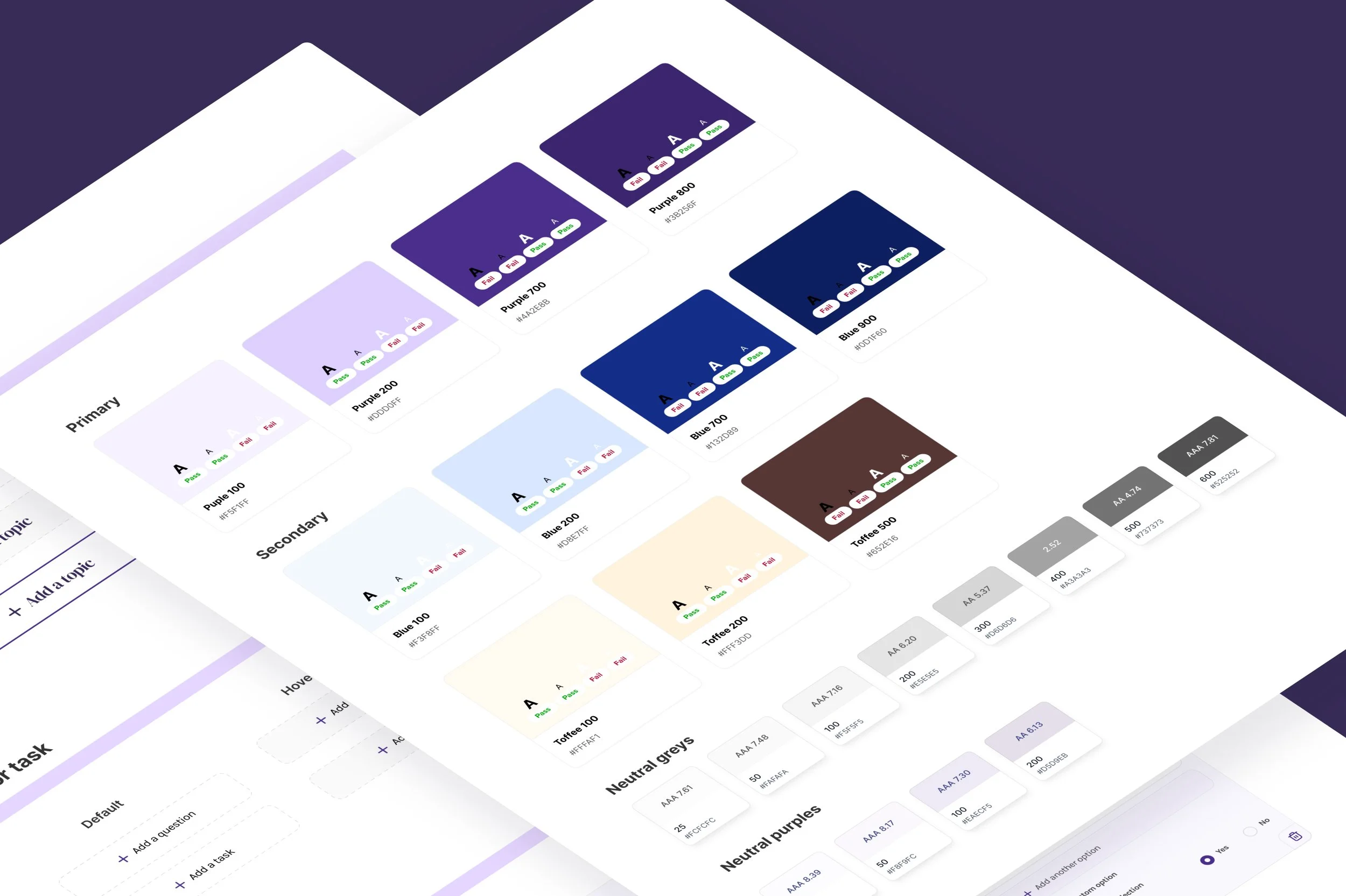Rumi Product Design
Rumi is an 'anytime' insights and discussion platform. It's a B2B SaaS product for healthcare organisations to run stakeholder engagements and virtual advisory boards with medical professionals. We undertook a product overhaul and you can read more about the rebrand in this case study here.
I was hands-on across the end-to-end design process and took ownership of the brand strategy and UX and CX vision.
My role
Product Designer
Timeline
4 months in 2024
My responsibilities
Brand strategy and UX and CX vision
Stakeholder management
Wireframing and prototyping
Design system and designer/developer handover
THE PROBLEM
Rumi was initially launched as an MVP on a limited budget
Although the original Figma file was pixel-perfect, the deployed version fell short of expectations, suffering from usability problems in both UX and CX. For example, the design overlooked critical 'above the fold' considerations. After the platform went live, we also had a better understanding of user behaviour to refine the product.
How might we improve the digital experience to encourage deeper insights and engaging discussions?
THE SOLUTION
A brand and product overhaul designed to scale with Rumi's ambitions
We tackled prominent usability issues in the UX and CX that were feasible within our timeline and budget. Below are some notable improvements.
THE PROCESS
Identifying opportunities to optimise the user experience
Firstly, a stakeholder workshop was conducted to understand current platform usage. Following this, I mapped out the customer journey and created user stories. I meticulously combed through the platform and examined how an existing business was utilising the platform to gather valuable real-world insights. Finally, I leveraged Google Analytics to make data-driven design decisions.
Wireframing and prototyping
The next phase involved crafting lo-fi wireframes which were showcased in stakeholder workshops. While I led the creation of the lo-fi wireframes to design the UX, I worked with a senior team member on UI design and the high-fidelity prototype. She provided guidance on establishing the design system and pattern libraries, and I actively got on the tools to help with the execution.
Considering all touchpoints
In the following stage of the process, I focused on evaluating the CX journey, encompassing touchpoints such as LinkedIn, email sequences and the marketing website. I designed templates so that the client could manage these assets on a day-to-day basis.
The design system and handing over to developers
In the last phase of this project, we focused on preparing everything for handover to the developers. I worked closely with our Senior UX/UI Designer, who offered invaluable guidance, to develop a comprehensive design system. This system covered fonts, colours, and icons for consistency. We also systematically broke down all the components in the design following the atomic design principles.
THE LEARNINGS
Lessons on limitations and roadmap realities
This project taught me a lot about constraints. While conducting my discovery research, I uncovered that user engagement was a key issue. However, due to limited time and budget, we were only able to skim the surface of this with the design solution. Several of my proposed features have been added to a future roadmap. It’s been my initiation into agency workflow and understanding limitations.
Next case study →

